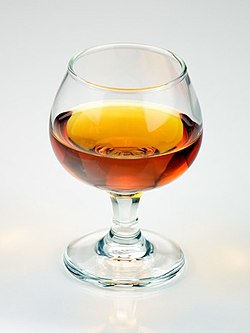
A snifter (also called brandy balloon, brandy snifter, brandy glass, brandy bowl or a cognac glass) is a type of stemware, a short-stemmed glass whose vessel has a wide bottom and a relatively narrow top. It is mostly used to serve aged brown liquors such as bourbon, brandy and whisky.
